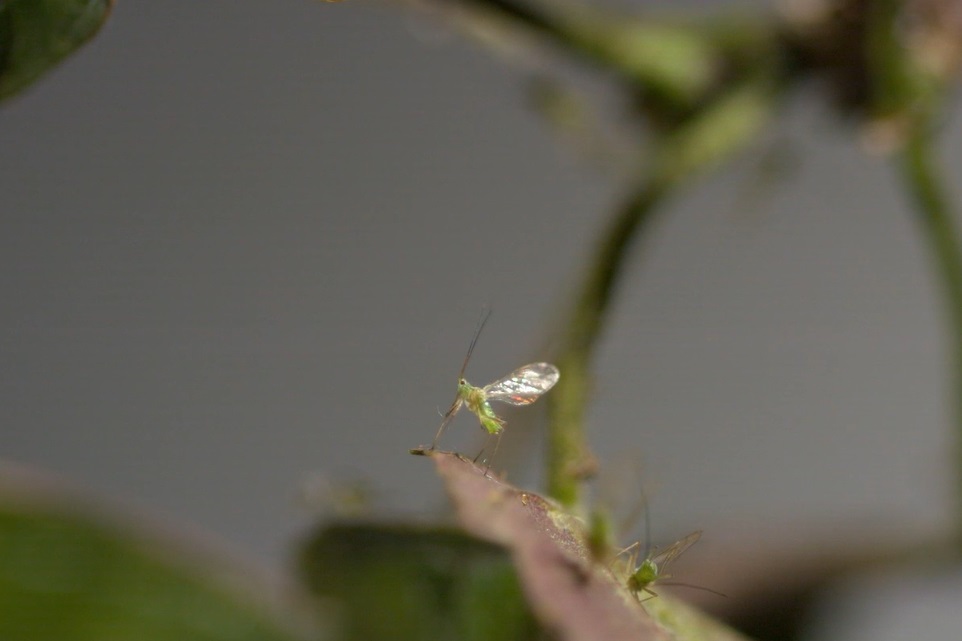Previously unknown details of aphids in flight will contribute to improved crop security

Researchers led by a scientist at Keele University in Staffordshire have studied the previously unknown flight mechanisms of a common crop pest, to learn more about their movements in a bid to improve food security and prevent the spread of disease.
Using state-of-the-art camera technology, the research team including researchers from Rothamsted Research took ultra slow-motion videos of aphids in flight to learn more about the biomechanics and physical mechanisms which they use to fly, much of which was previously unknown despite being crucial to understanding their migratory behaviour.
The resulting footage will help researchers understand more about aphids’ flight patterns and behaviour, which in turn will help them learn more about how aphids are affected by diseases and viruses which can cause crop losses.
Aphids often don’t affect plants directly by their feeding behaviour. Instead, the damage is indirectly caused by viruses that are transmitted by the aphids during feeding. These can stunt growth, yellow leaves, and thus reduce yields. Some species of aphids are also known to excrete honeydew, a sticky, sugary substance that can attract other insects and promote the growth of mould. Often, we only become aware of this after our parked car succumbs to the sticky rain of honeydew that falls from the tree canopy above.
It’s been estimated that crop losses caused by aphids could be as high as £190 million every year, and although methods to control their populations already exist, these often involve killing the aphids off, depriving birds and other species of an important food resource.
Researchers are therefore studying new methods of managing these pests that do not involve lethal force such as pesticides, and by studying the movements and mechanisms involved in helping these insects to fly, scientists believe they could use footage like this to better identify which insects are carrying disease or viruses, and deploy control strategies accordingly to manage them.
Professor James Bell from Keele’s School of Life Sciences, who led the research, said: “Aphids are as beautiful and as graceful in flight as their colourful distant cousins, the butterflies. But, if we are to make progress in improving food security, major challenges must be overcome to protect our crops. In particular, to inform the risk of virus transmission, we need to build on this research to understand the energetic cost of flight for aphids over short and long distances.”
The research has been published today in the journal Agricultural and Forest Entomology.
Most read
- Research by Keele alumnus improves outcomes for children with rare type of brain tumour
- Keele and NHS Trust partner to advance ethical AI in healthcare
- Keele Business School leaders invited to discuss work in Parliament
- Health impacts of eating disorders complex and long-lasting, researchers find
- Keele-led hydrogen research programme scoops top industry award
Contact us
Andy Cain,
Media Relations Manager
+44 1782 733857
Abby Swift,
Senior Communications Officer
+44 1782 734925
Adam Blakeman,
Press Officer
+44 7775 033274
Ashleigh Williams,
Senior Internal Communications Officer
Strategic Communications and Brand news@keele.ac.uk.


